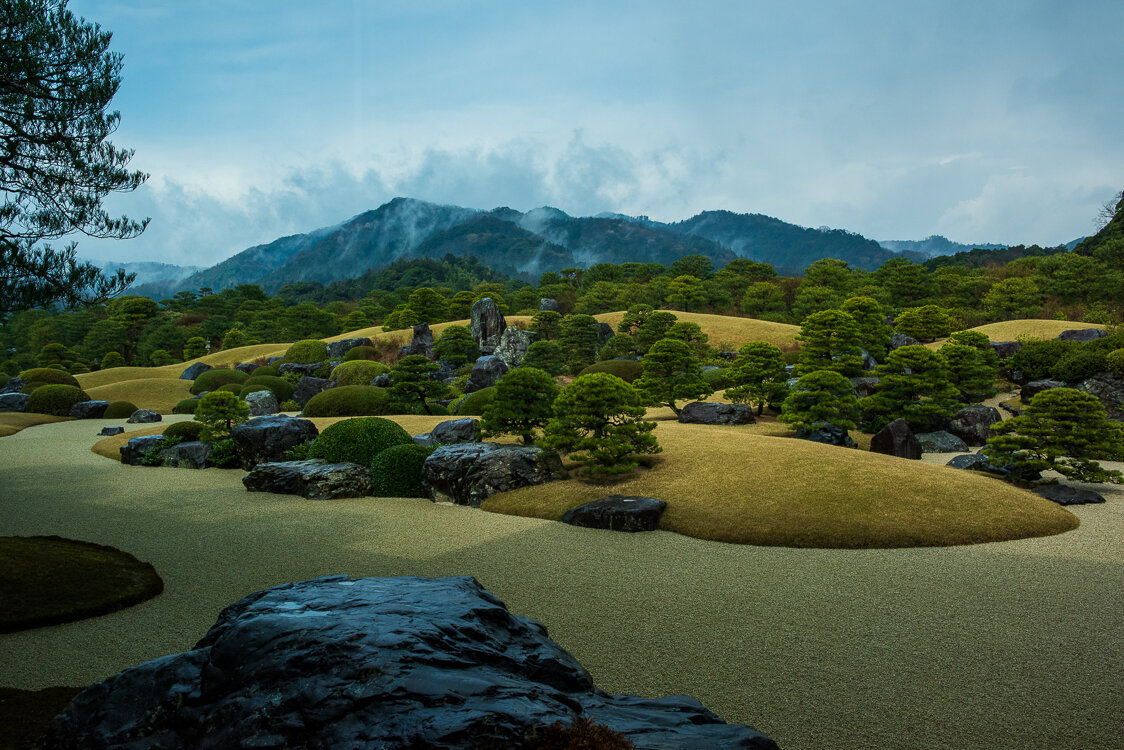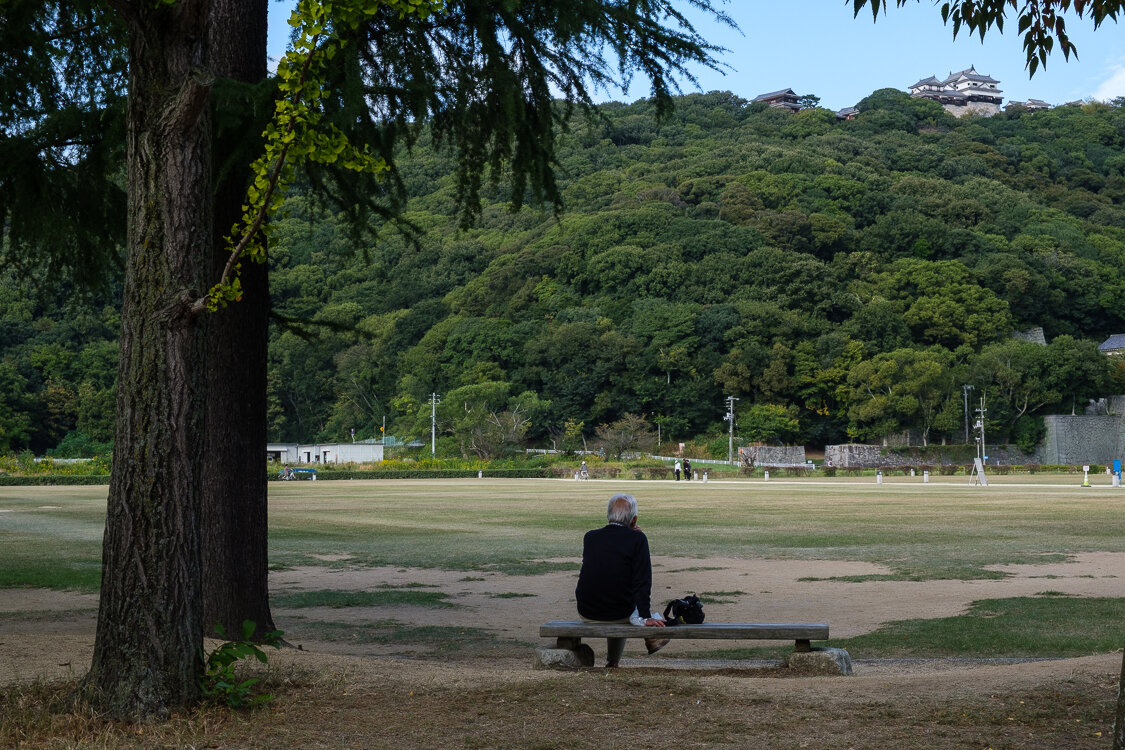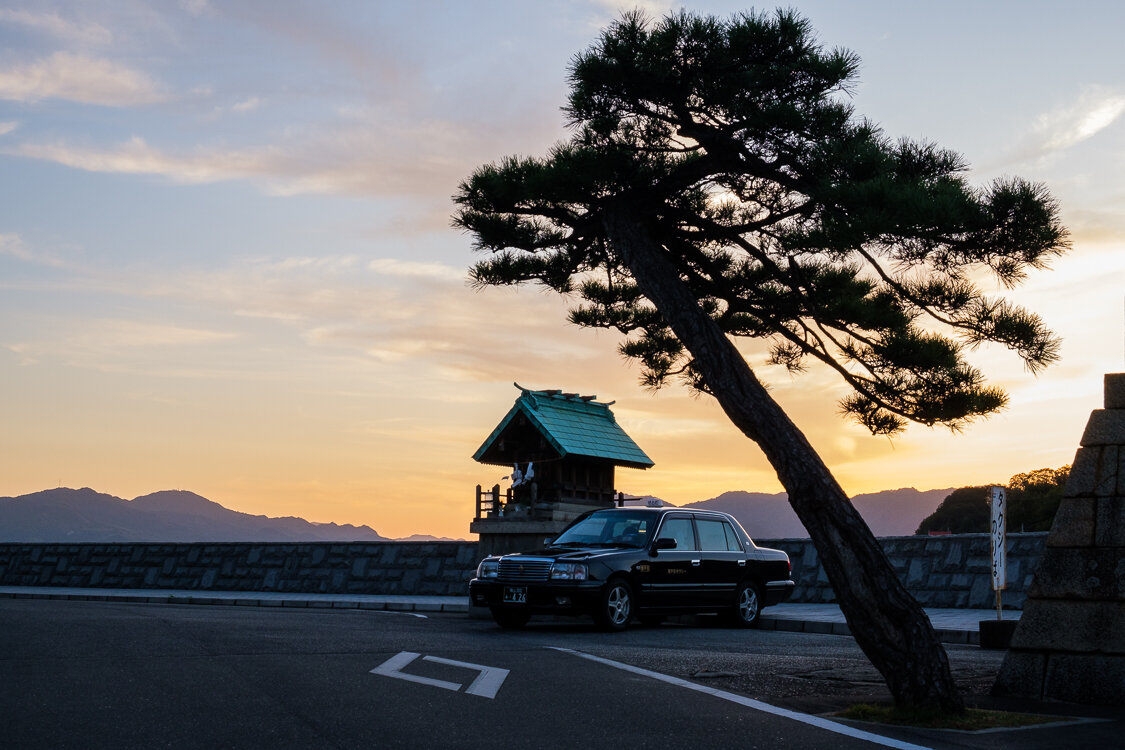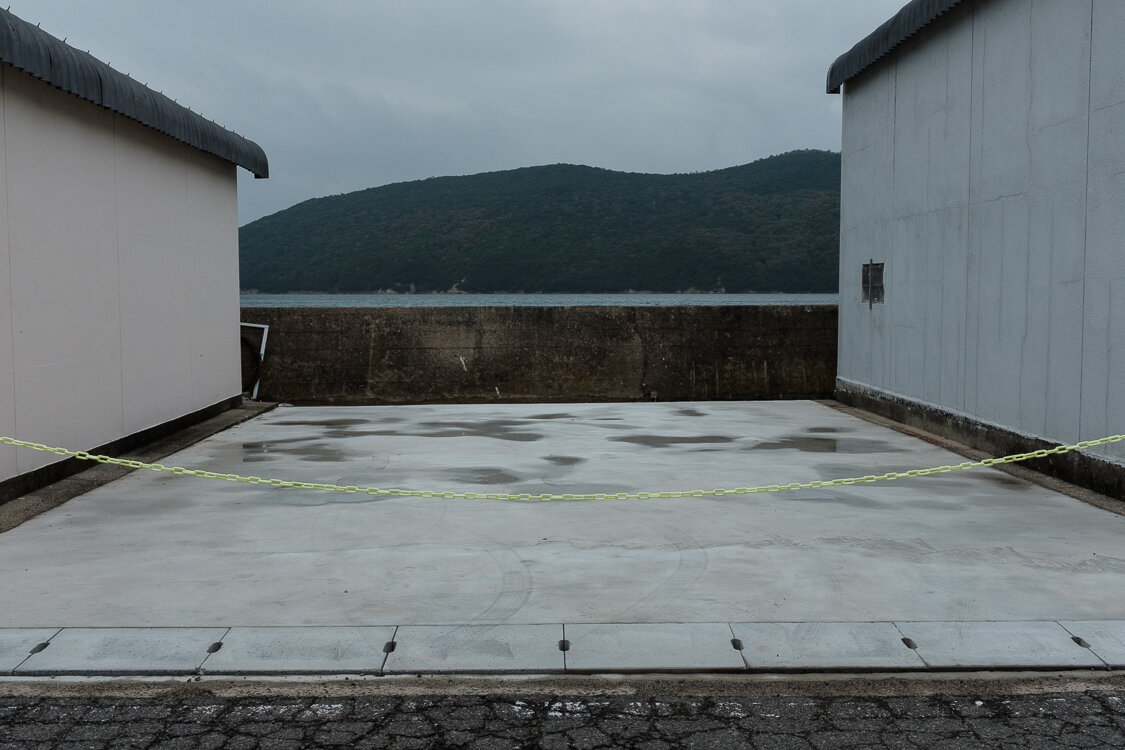Continuing with my series of Japanese artistic concepts that can be applied to photography, shakkei is an originally Chinese concept often used in traditional gardens throughout Japan. The idea is to incorporate the existing background landscape into the design of the garden, providing a back layer to the scene that seamlessly blends with the garden enclosure.
While the term originally refers to garden design, as a photographer I regularly incorporate this concept into my photography, and chances are, you do this, too. I posit that photographs that use a back layer that is not directly connected with the foreground of a scene, but through the framing choices of the photographer, come to work together, are a form of shakkei. In the above example photographs, the Adachi Museum and Garden in Shimane Prefecture is a quintessential example of shakkei in gardening. The mountain, graced by mist on this day, is not part of the garden, but it blends seamlessly with the garden design. In the park view of Matsuyama Castle, this is a most basic and obvious example of borrowed scenery within a photograph. The next two photographs are progressively more subtle, as each examines a subject from everyday life, and the scenery is quietly placed as a fragment of the overall frame.
There are many master photographers that are proficient at employing this technique, but two examples, each with very distinct styles, come to mind for me. The first is probably obvious to you, if you follow my photographic circle already, but that is Sam Abell. The famous photograph of the pears in the windowsill of the National Hotel in Moscow, with Red Square visible in the distance is a perfect example. Mr. Abell’s photographs that, in his words, “link a still life to a landscape” — are fine examples of photographic shakkei, and the pears in the window have influenced numerous photographers over the past four decades.
Parking Lot Trees, Sidewalk Trees, Apartment Building ©2019 George Nobechi
The second photographer I cite today, also a great master, is perhaps one that you may not have guessed, but it is Arthur Meyerson. For him, what immediately comes to mind for me is the photograph of Hong Kong (#16 in ‘Classics’) where a billboard/mural featuring the Marlboro Man acts as the backdrop that simultaneously looms over and yet seamlessly integrates with the plain-looking apartment buildings in the foreground. Using the properties of a long lens to maximum advantage, Mr. Meyerson compresses space in a way that only a photograph can accomplish.
Note that this is different from just using a background wall or building or mural and having someone walk in front of it. That’s not a borrowed scenery, it’s simply a backdrop or setting. Photographic shakkei should have a foreground scene and a separate background scene and the two should work together within the frame to appear to be integrated to the viewer. I’d add the wrinkle that this integration doesn’t always have to be conducted via sleight-of-hand, but it could be jarring by design as well.
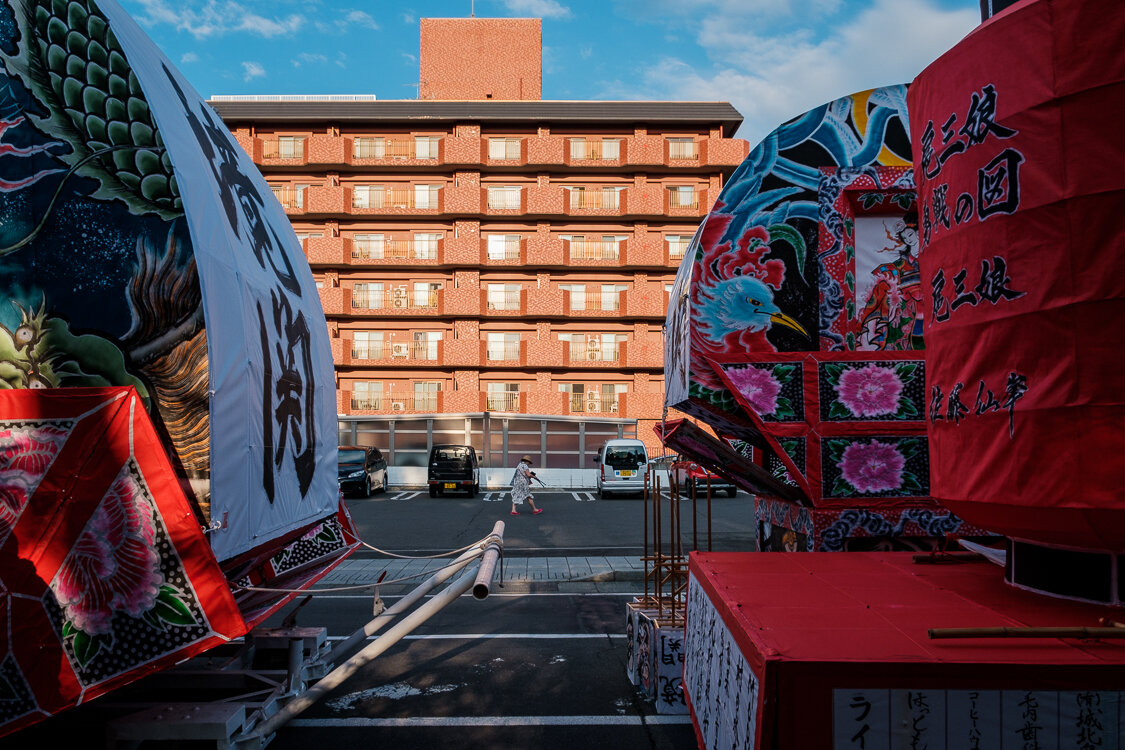
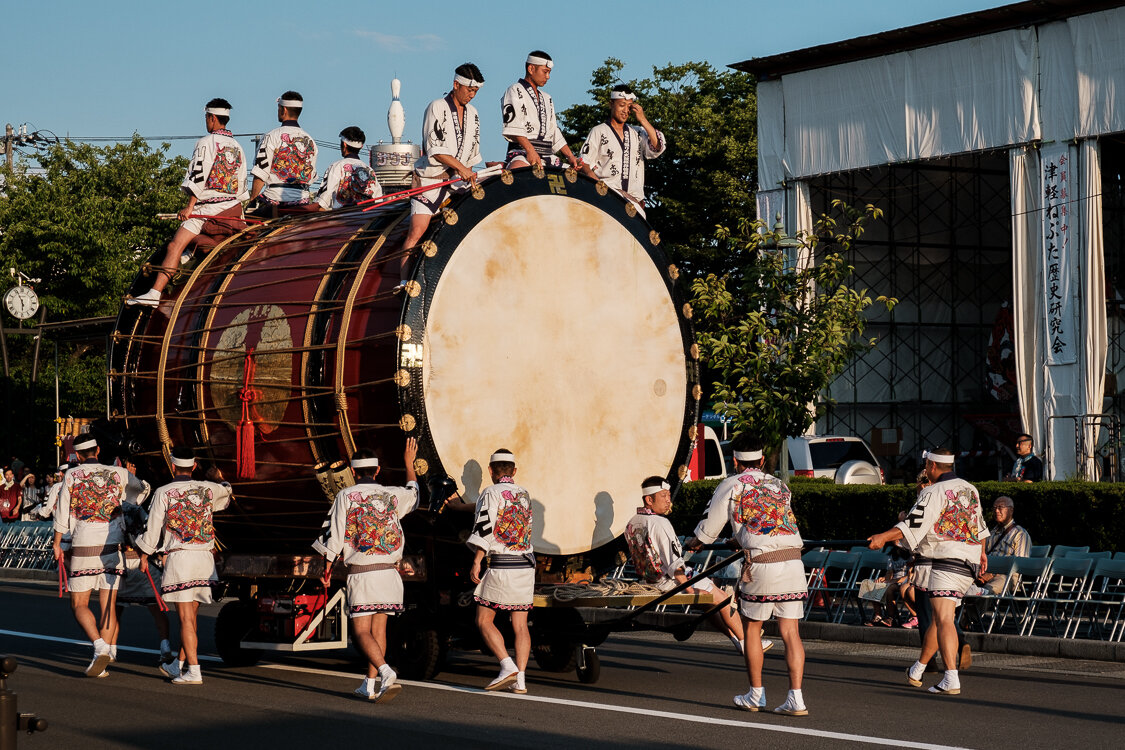
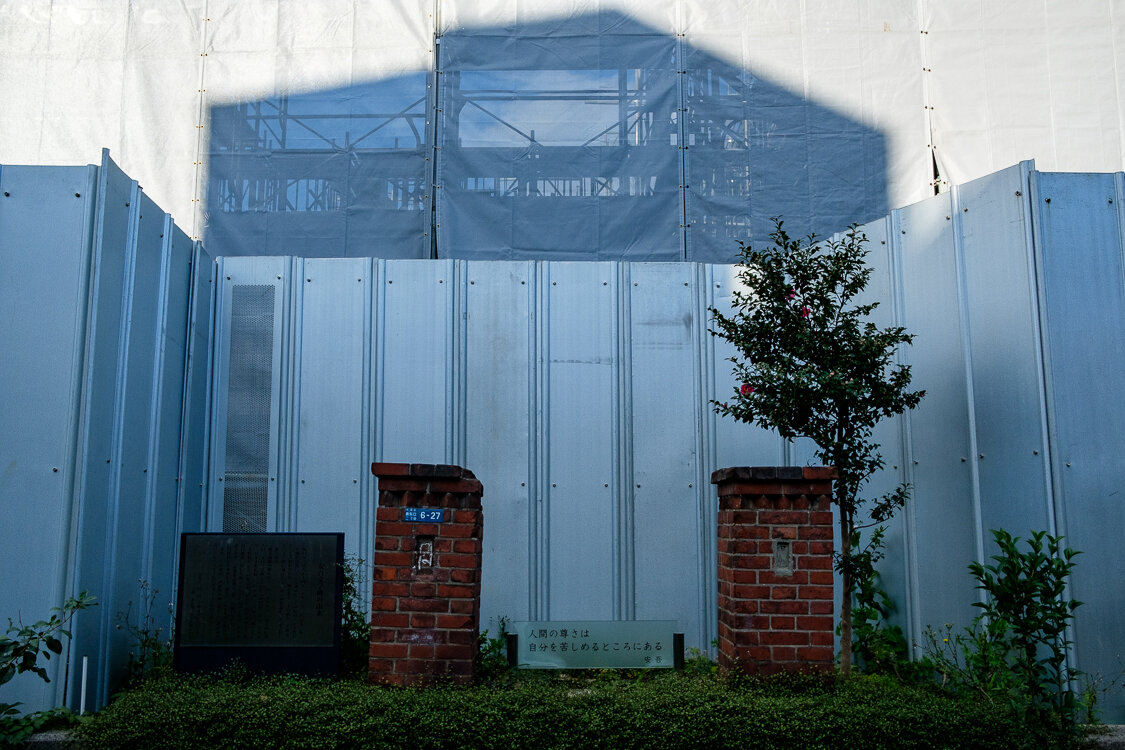
In these next three examples, I use shakkei in a different way. In the first example, I incorporate parts of the colour palette and the graphic visuals of festival floats - recognizing the beauty of traditional Japanese aesthetics, and then setting them against the ugly, common example of post-war Japanese building design. I then wait for the right character to arrive at the precise spot where I wished her to be. In the second example, the borrowed scenery is very subtle. One of the men on the drum is not like the others. And the third is my personal favourite example of this technique taken to the outer reaches of its possibilities, or so I think. We are looking at a construction site. In the foreground, the old gate has been left preserved, but outside of the construction site. Above the wall is scaffolding, covered by a tent. It’s the late afternoon and the sun is shining from behind me. The shadow of the building is the shadow of the building behind me, not the building being built over the wall. The shadow coincidentally aligned with an open patch in the scaffolding behind the tent, and created a window to the sky. I waited for a cloud to come by so that the viewer could understand a little better what we were looking at. With this borrowed scenery, I have borrowed multiple scenes and in a way, managed to transcend time as well: the old building represented by the gate, the shadow creating an imaginary building, and the sky beyond creating something different. Perhaps in having to explain it this far for people to understand it, it has gone too far in its details; nonetheless, when I look at it, I have an appreciation for what I noticed and executed in its making.
Regardless of how you approach it - quietly as Mr. Abell does, or dynamically as Mr. Meyerson does, incorporating shakkei techniques into some of your atmospheric photographs will add depth and intrigue to your work.

